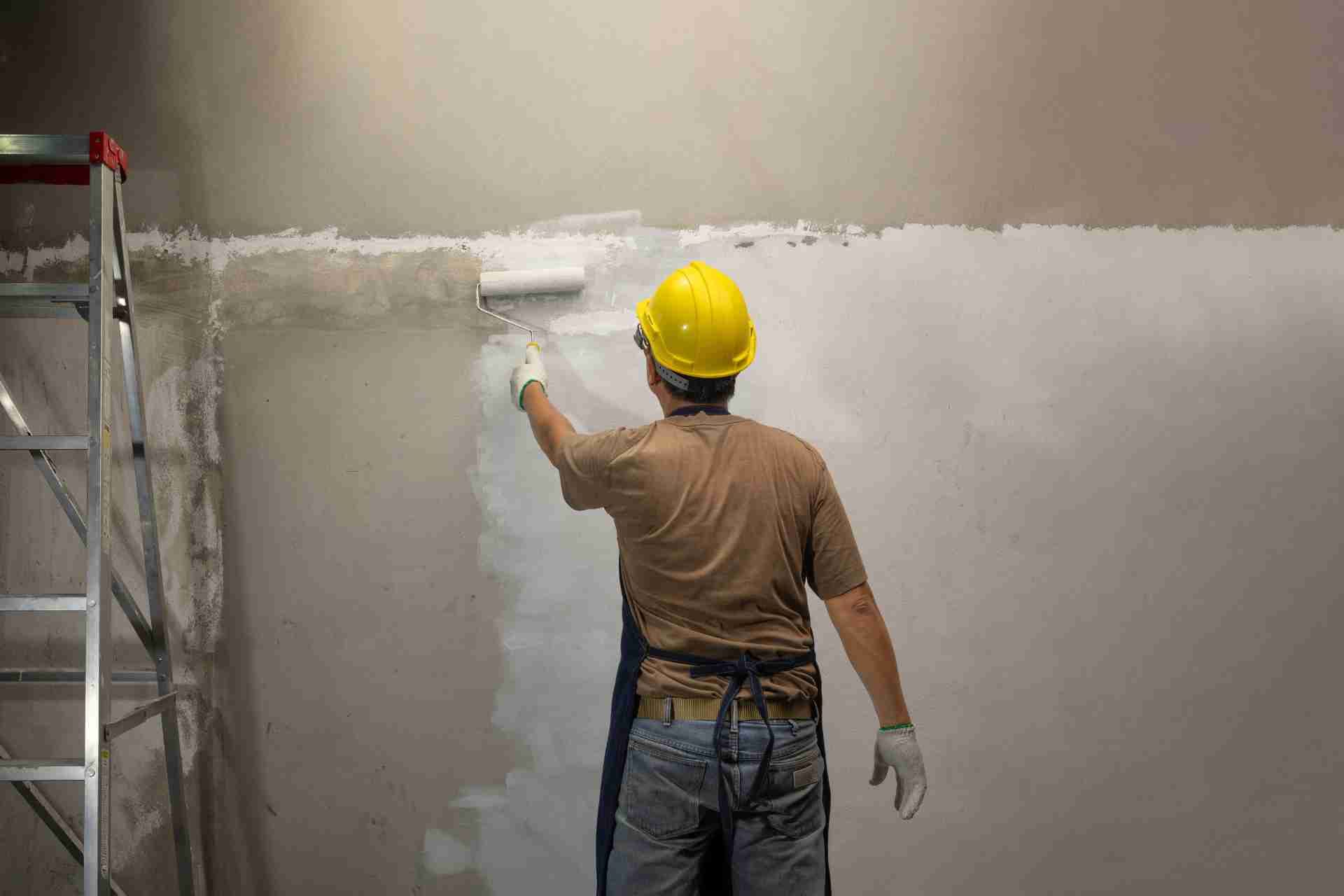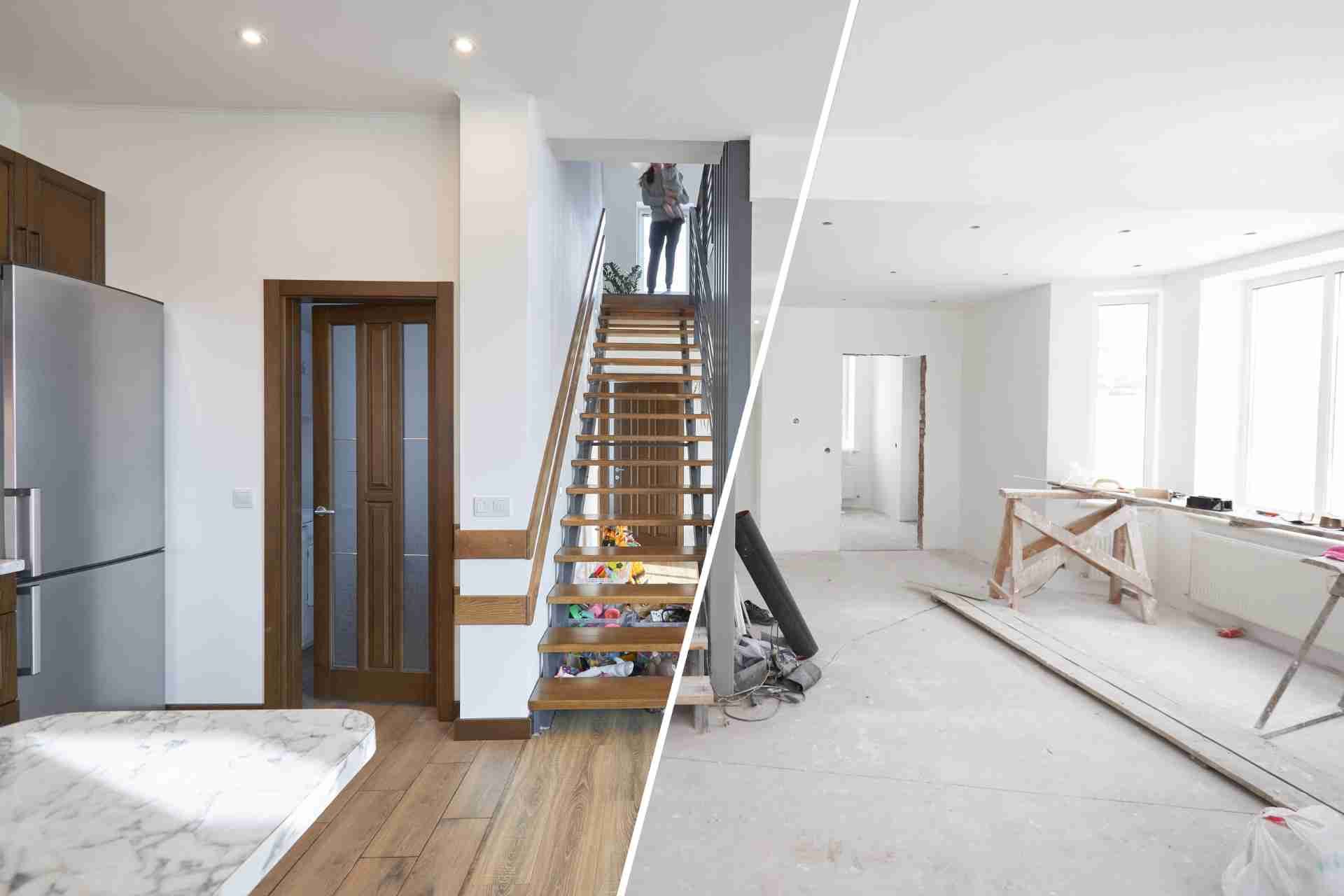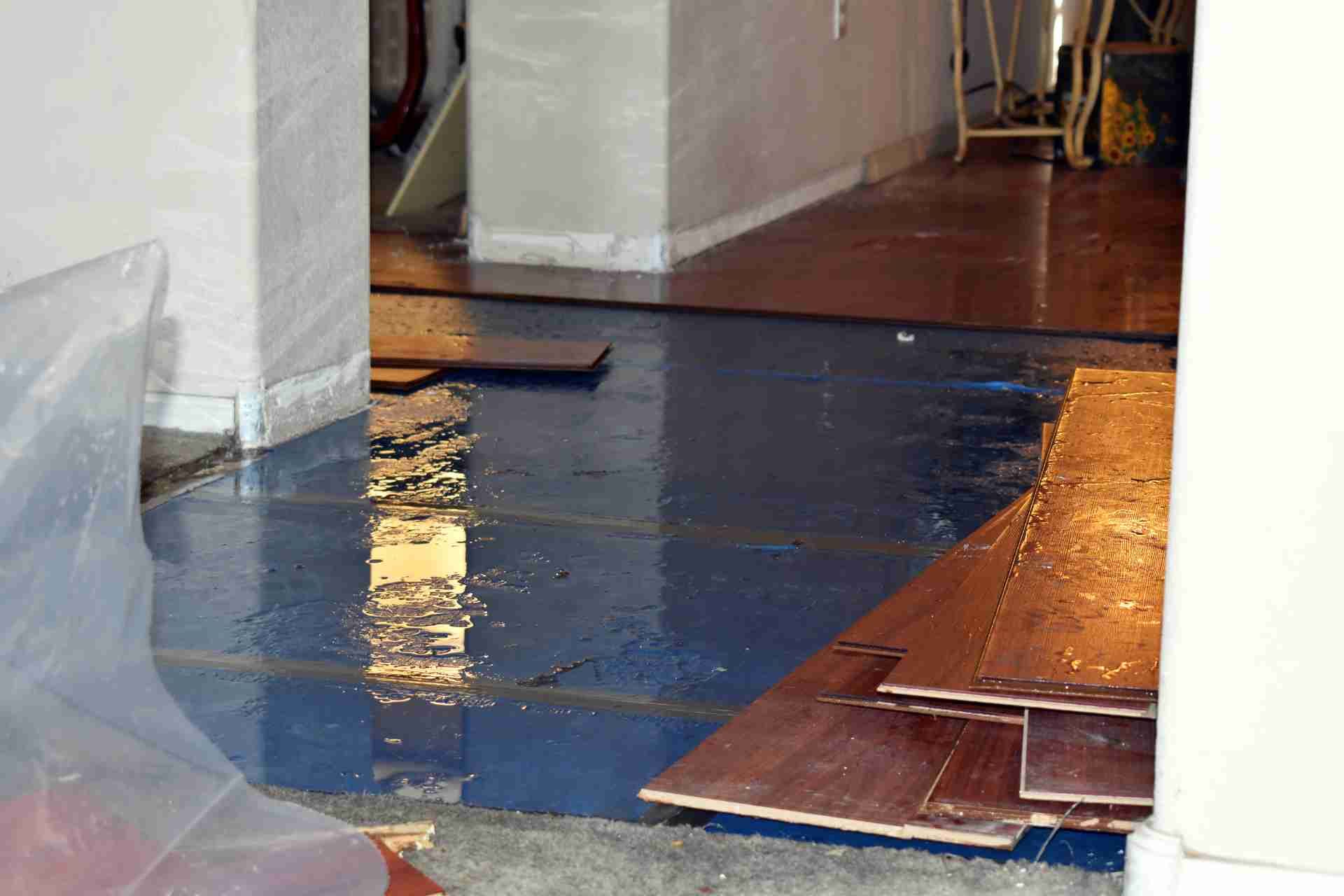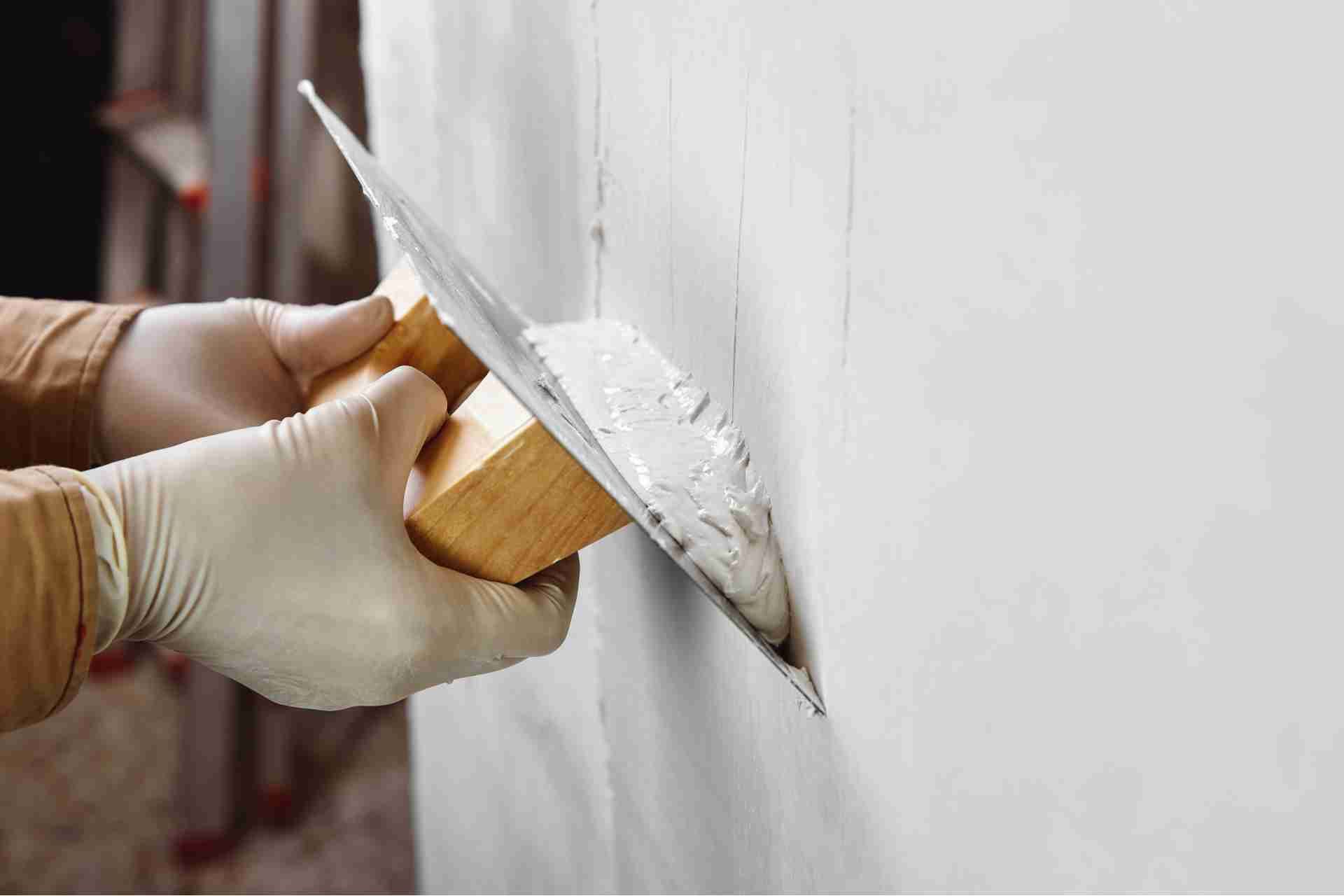How to Paint An Accent Wall
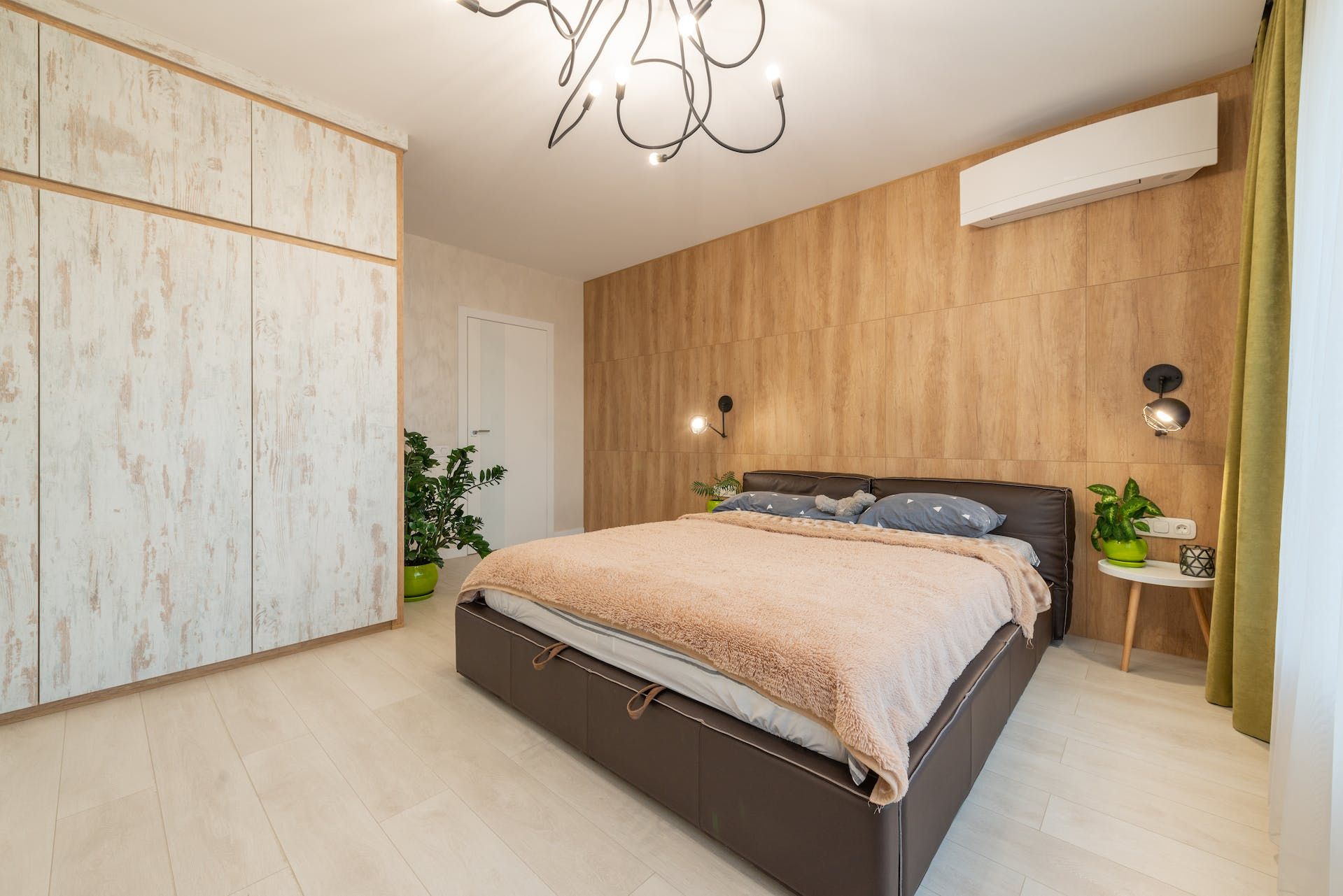
Are you tired of the same old boring walls in your home? Want to add a pop of color and personality to your space? Look no further than painting an accent wall! Whether you’re a seasoned painter or a DIY newbie, painting an accent wall is a simple and cost-effective way to transform any room. This guide will help you go through the process of painting an accent wall, step by step. Check out.
Choosing the Right Wall
The first step is to decide which wall you want to accentuate. Typically, an accent wall is chosen as a focal point in a room, such as the wall behind your bed in the bedroom or the wall facing the entryway in the living room.
Key factors to consider when selecting the perfect accent wall.
1. Purpose and Function: The first step in choosing an accent wall is determining the purpose and function of the room. Are you looking to create a cozy atmosphere in a living room, make a small space appear larger, or enhance the mood in a bedroom? Each room has its own unique needs, and understanding the purpose of the room will help guide your decision. For example, a bold color or intricate wallpaper may work well in a living room, while a softer tone or textured finish could be suitable for a bedroom.
2. Color Scheme: One of the most crucial aspects of selecting an accent wall is considering the existing color scheme in the room. Look around and take note of the dominant colors. Choose a hue that complements those colors, rather than clashes with them. If your room has neutral tones, a vibrant accent wall can add a burst of energy. On the other hand, if your room already features bold colors, a subtler accent wall might be more appropriate. Harmonizing the colors in your space will result in a cohesive and visually appealing look.
3. Architectural Features: Take into account the architectural features of the room when determining where your accent wall should be. If you have a fireplace, an exposed brick wall would accentuate its rustic charm. Alternatively, if there are no distinct architectural elements, consider creating one by using a bold color or a textured wallpaper. Emphasizing architectural features with an accent wall can create a sense of depth and visual interest.
4. Lighting Considerations: It's essential to consider the lighting in the room before finalizing your accent wall choice. Different colors and finishes can react differently to natural and artificial light. It's best to sample your chosen color or material and observe how it changes throughout the day. A color that appears vibrant in natural light might seem too intense under artificial lighting. Take the time to test and ensure that your accent wall looks as captivating in all lighting conditions.
5. Personal Style and Preferences: Ultimately, your accent wall should reflect your personal style and preferences. Don't be afraid to be bold and creative. If you love a particular color or pattern, go ahead and make it your accent wall. It's important to feel connected to the space you're in, and your accent wall is an opportunity to express yourself. Just remember to strike a balance between personal style and overall room aesthetics.
Selecting the Perfect Color
Once you’ve chosen the wall, it's time to pick a color that complements the overall aesthetic of the room. Look for colors that create contrast or tie in with the existing décor. Remember, an accent wall is meant to stand out, so don’t be afraid to go bold or experiment with vibrant hues.
Here are the essential tips to help you select the perfect color for your accent wall.
Consider the Room's Purpose
First and foremost, consider the purpose of the room where you plan to add the accent wall. Is it a living room, bedroom, or perhaps a home office? Understanding the function of the room will help determine the mood you want to create. For example, if you want to create a calming atmosphere in your bedroom, you may opt for cool and muted hues like soft blues or pale greens. Conversely, if you want to add energy and vibrancy to your living room, bolder colors such as deep reds or bright yellows may be more suitable.
Take Existing Decor and Furnishings into Account
Another vital aspect to consider when selecting an accent wall color is the existing decor and furnishings in the room. Look at the colors present in your furniture, curtains, or artwork. You can either choose a color that complements the existing palette, creating a cohesive look, or select a contrasting color that helps your accent wall stand out. A neutral or muted-colored room can benefit from a more vibrant accent wall, while a room with bold or colorful elements may benefit from a more subdued color for balance.
Consider the Room's Lighting
The lighting in a room plays a significant role in how colors appear. Natural light and artificial lighting can greatly affect the way a color is perceived. If the room receives ample natural light, you have the freedom to choose from a wide range of colors. However, if the room lacks natural light, it is advisable to opt for brighter or lighter colors to prevent the space from feeling gloomy or closed-in. Consider purchasing small paint samples to test on the wall and observe how the color looks under different lighting conditions before making a final decision.
Sample and Test Colors
Before committing to a color for your accent wall, it is crucial to test it in the actual room. Paint a small sample on the wall to observe how it looks at different times of day, and evaluate how it interacts with the other elements in the room. Remember to let the paint dry completely, as colors often change once they dry. Additionally, consider the color's impact on the overall flow and harmony of your space. Ensure the color you choose complements and enhances the overall aesthetic of the room.
Have Fun and Express Yourself
Lastly, don't be afraid to have fun and express your personality when selecting the color for your accent wall. This is your chance to bring a unique touch to your space and make it truly your own. Experiment with different colors, shades, and finishes until you find the one that speaks to you.
Preparing and Protecting
Before you start painting, make sure to properly prepare the wall. Here's a step-by-step guide for preparing and protecting an accent wall before painting.
Step 1: Remove any obstacles
Before you begin, it's important to clear the space around the accent wall. Remove furniture, wall hangings, and any other items that may hinder access to the wall. This will not only protect your belongings from getting messy but also allow you to work efficiently.
Step 2: Repair any damages
Inspect the accent wall for any flaws, such as cracks, dents, or holes. Using a putty knife, fill in these imperfections with spackle or appropriate wall filler. Smooth out the surface and wait for it to dry completely. Sand the area gently to achieve a seamless finish. Remember, a well-prepared surface will ensure that the paint adheres properly and results in a professional-looking accent wall.
Step 3: Clean the wall
Next, clean the accent wall to remove any dust, dirt, or grime that may inhibit paint adhesion. Use a mild detergent mixed with water and a sponge or a soft cloth to gently wipe the wall's surface. Pay extra attention to corners and edges, as these areas tend to accumulate more dirt. Once the wall is clean, rinse it thoroughly and allow it to dry completely.
Step 4: Protect surrounding areas
To prevent unwanted paint splatters or spills, it's essential to protect the surrounding areas. Cover the floor with a drop cloth or plastic sheeting, ensuring it extends beyond the width of the wall. Use painter's tape to mask off adjoining walls, ceiling, baseboards, and any other areas that need to be safeguarded from accidental paint application. Taking the time to properly protect the surroundings will save you from unnecessary cleanup and ensure a clean and professional-looking result.
Step 5: Prime the wall
Priming is an important step that is often overlooked. Applying a good-quality primer helps the paint stick better, provides a more even finish, and enhances durability. Choose a primer suitable for your wall type (e.g., drywall, wood, or concrete) and apply it thinly and evenly with a paintbrush or roller. Allow the primer to dry completely before moving on to the next step.
Step 6: Paint the accent wall
Finally, it's time to paint the accent wall. Choose a high-quality paint in the desired color and finish. Stir the paint thoroughly before pouring it into a paint tray. Begin by cutting in along the edges and corners using a brush, and then use a roller to apply the paint to the larger areas. Apply multiple thin coats for a smooth, consistent finish. Remember to let each coat dry completely before applying the next one.
Priming the Wall (if necessary)
If your chosen color is significantly darker or lighter than the current wall color, it might be necessary to prime the wall before painting.
Why prime your wall?
Priming your accent wall before painting not only helps the color to appear more vibrant but also enhances the durability and longevity of the paint. Without proper priming, the new color may not adhere properly to the wall, leading to patchy or uneven results. Additionally, priming helps to seal the wall's surface, preventing any stains from bleeding through and providing a smooth canvas for the paint.
Choosing the right primer
When it comes to priming an accent wall, it's crucial to select the right type of primer based on the wall's current condition and the chosen color for your accent wall. If the wall is new or has never been painted, a basic primer should suffice. However, if you're covering up an existing color or dealing with stains, it's better to opt for a stain-blocking primer. These primers are specially formulated to prevent any unwanted hues from showing through, ensuring a clean and even finish.
Preparing your wall
Before priming your accent wall, it's important to prepare the surface properly. Start by cleaning the wall using mild soap and water to remove any dust, dirt, or grease. Allow the surface to dry completely before proceeding. Next, inspect the wall for any imperfections, such as cracks or holes. Fill these with spackle or putty, and once dried, use sandpaper to smoothen the surface. Finally, dust off any residual particles using a clean cloth or a vacuum cleaner.
Applying the primer
Now that your wall is clean and prepped, it's time to apply the primer. Start by stirring the primer thoroughly to ensure an even consistency. Using a paint roller or brush, apply a thin and even coat of primer to the accent wall, taking care not to leave any strokes or marks. Apply the primer in a "W" or "M" motion to ensure complete coverage. If needed, you can apply a second coat after the first coat has dried. Follow the manufacturer's instructions for drying time between coats.
Painting Techniques
1. Color blocking: Color blocking is a popular painting technique that involves using contrasting colors on the wall to create a statement. Choose two or more colors that complement each other, and paint different sections of the wall with each color. This technique can instantly transform a plain room into a vibrant and modern space.
2. Ombre effect: The ombre effect is achieved by blending different shades of the same color from light to dark, creating a beautiful gradient. Start by painting the top section of the wall with the lightest shade and gradually transition to the darkest shade at the bottom. This technique adds depth and visual interest to the room, especially when using colors that evoke tranquility or warmth.
3. Stripes: Striped accent walls can create a dramatic and stylish effect. Choose two or more contrasting colors and use painter's tape to create vertical or horizontal stripes. You can vary the width of the stripes to add a dynamic touch. Striped accent walls work well in bedrooms, living rooms, and offices, as they add a sense of sophistication and playfulness.
4. Stenciling: Stenciling is an excellent technique for those who want to add patterns or intricate designs to their accent walls. There are countless stencil designs available in the market, ranging from geometric patterns to floral motifs. Choose a stencil that complements your room's aesthetics and use a contrasting color to create a visually striking effect.
5. Texture painting: Texture painting is a technique that adds depth and dimension to a wall's surface. You can achieve this effect by using tools like sponges, brushes, or even crumpled plastic bags to create a textured pattern on the wall. Once the base coat is dry, gently dab or roll the textured tool of your choice onto the wall, creating a unique and tactile surface.
6. Metallic accents: Metallic accent walls can create a luxurious and glamorous ambiance in any room. Choose a metallic paint color like gold, silver, or bronze and apply it to the wall using a roller or brush. Metallic accent walls work exceptionally well in contemporary or industrial-style spaces, as they add a touch of elegance and sophistication.
Finishing Touches
Once your painting is complete, carefully remove any painter's tape from the adjacent walls and accessories. Touch up any areas that need extra attention, and double-check for any missed spots or drips. Clean your brushes and tools according to the manufacturer's instructions.
Enjoy Your New Accent Wall
Now that you’ve successfully painted your accent wall, step back and admire your work! The transformed wall will instantly add character and depth to your room. Don’t be surprised if your accent wall becomes the center of attention and a conversation starter with your guests.
With just a little effort and creativity, painting an accent wall is a simple and rewarding project that can truly transform your space. So go ahead, unleash your inner artist, and enjoy the exciting process of adding a burst of color to your home!

